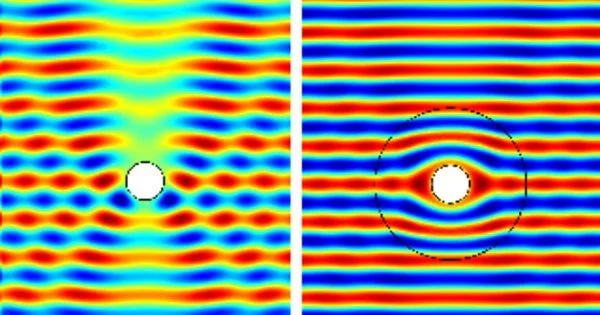The use of metamaterials in an invisibility cloak is known as metamaterial cloaking. This is accomplished by manipulating light’s paths as they pass through a novel optical material. Metamaterials can direct and control the propagation and transmission of specific parts of the light spectrum, making an object appear to be invisible.
The use of materials with unique electromagnetic properties to make objects invisible to certain wavelengths of light is known as metamaterial cloaking. Metamaterials are man-made structures with unusual properties, such as a negative refractive index or unusual absorption characteristics. It is possible to bend and redirect light around an object, making it appear invisible, by carefully designing the properties of a metamaterial.
Based on transformation optics, metamaterial cloaking describes the process of shielding something from view by controlling electromagnetic radiation. Objects in the defined location remain, but incident waves are directed around them without being affected by the object. By carefully engineering the properties of metamaterials, it is possible to create cloaking devices that can make objects invisible to certain wavelengths of light or other types of electromagnetic radiation. These devices work by bending and redirecting the radiation around the object, rather than allowing it to interact with the object and create a reflection or shadow.
The idea of metamaterial cloaking has been around for several decades, but the technology is still in its early stages of development. One of the biggest challenges is creating metamaterials that are practical and cost-effective to produce, and that can work effectively across a range of wavelengths. Nonetheless, research in this area has already led to some promising advances, and the potential applications of metamaterial cloaking are numerous, from military stealth technology to medical imaging.
Application
Metamaterial cloaking has numerous potential applications, such as improving optical device performance or developing more effective stealth technologies for military use. However, there are obstacles to overcome in developing effective metamaterial cloaks, such as ensuring that they work across a wide range of wavelengths and angles of incidence, as well as making them practical and cost-effective to produce.
While metamaterial cloaking has been demonstrated in the lab, there are still many challenges to overcome before it can be used in real-world applications. However, research in this area is ongoing, and metamaterial cloaking may become a valuable tool for a wide range of applications in the future.
















